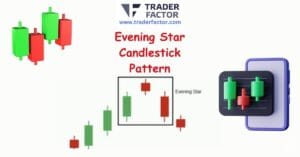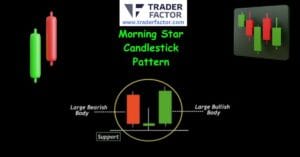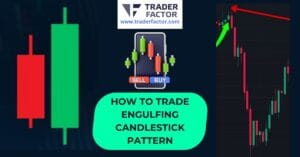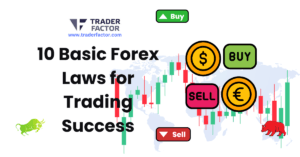Wondering which are the best days to trade Forex for maximum profits? Like fishing, trading Forex isn’t about casting your line out at any given time and expecting a bite. Depending on your understanding and strategy, there’s a rhythm, a pattern, a certain ebb and flow to the market that can be your friend or foe. Research points to Tuesday, Wednesday, and Thursday as the most profitable days to trade Forex. Why, you might ask? The answer lies in the fact that these are the days when the market is at its most volatile, providing more opportunities to catch that big fish. However, it’s not as simple as trading and expecting to reel in profits. Let’s navigate the currents and tides of Forex trading together, shall we?
Table of Contents
ToggleOverview The Best Days To Trade Forex
To illustrate the concept of the best days to trade forex using currencies, let’s create a scenario involving two major currency pairs: EUR/USD and GBP/JPY.
Tuesday Morning: The markets have just started to pick up after Monday. You notice an uptick in volatility and trading volume in the EUR/USD pair as European traders are active, and the U.S. market is about to start. This period is an excellent opportunity for trading this pair due to increased activity and potential for significant price movements.
Wednesday Afternoon: By this time, both the European and U.S. markets are fully active. Additionally, Asian traders are preparing for their next trading day. This overlap increases liquidity in the market, making it a prime time to trade the GBP/JPY pair. The volatility from both the European close and the anticipation of the Asian open provides unique opportunities for traders to capitalize on potential price movements.
Thursday Late Evening: As the U.S. session winds down and the Asian market is in full swing, traders might find opportunities in pairs like GBP/JPY due to economic announcements in Japan or shifts in sentiment affecting the British pound. The liquidity is still relatively high because of the overlap between the U.S. and Asian markets, offering smoother transactions and tighter spreads.
Friday Morning: Trading volume and volatility start to wane as traders begin to close their positions to avoid weekend risk. However, there might still be opportunities in the EUR/USD pair early in the day, particularly if there are significant economic reports released in Europe or the U.S. that could affect the currency values. It’s essential to be cautious and aware of the decreasing activity as the day progresses.
This scenario underscores the importance of understanding market dynamics and choosing the right times to trade specific currency pairs. Midweek, particularly Tuesday through Thursday, offers the highest volatility and liquidity, making it the most opportune time to trade.
To better visualize the concept of the best days to trade forex for the currency pairs EUR/USD and GBP/JPY, let’s outline the scenario in a table format:
| Day & Time | Currency Pair | Market Condition | Reason for Trading Opportunity |
|---|---|---|---|
| Tuesday Morning | EUR/USD | High volatility and trading volume | European market activity increases; U.S. market opening leads to potential significant price movements. |
| Wednesday Afternoon | GBP/JPY | High liquidity with overlapping market hours | European close and Asian open increase volatility; prime time for trading due to liquidity. |
| Thursday Late Evening | GBP/JPY | Overlap between U.S. and Asian markets | Economic announcements in Japan or shifts in GBP sentiment offer trading opportunities. |
| Friday Morning | EUR/USD | Decreasing trading volume and volatility | Early day economic reports from Europe or U.S. may impact currency values; caution advised as activity wanes. |
By focusing on specific currency pairs like EUR/USD and GBP/JPY during these optimal periods, traders can leverage increased volatility, liquidity, and potential for significant price movements to their advantage. However, staying informed and cautious, especially towards the end of the week, is crucial for managing risk and capitalizing on opportunities effectively.
Optimal Trading Days and Times
To maximize your forex trading profits, it’s crucial to know the best days and times to trade. Due to their higher volatility, the best days are typically Tuesdays, Wednesdays, and Thursdays. These days are when market volatility is at its peak, creating more trading opportunities for you to capitalize on.

Pay attention to the fluctuations of different currency pairs during these days. You’ll notice that some currency pairs have more predictable trading patterns, which can be advantageous when planning your trades. Economic news also plays a huge role in the forex market. Important announcements or events can cause sudden shifts in currency values, opening up even more trading opportunities.
Understanding the dynamics of currency pair fluctuations is crucial for successful forex trading. The nature of the forex market is inherently volatile, with exchange rates changing frequently due to a myriad of factors including economic news, geopolitical events, and market sentiment. This volatility can present both opportunities and risks for traders. Let’s consider an illustrative example to demonstrate how traders might navigate these fluctuations:
Example: Trading EUR/USD and GBP/JPY
1. Economic News Impact:
- EUR/USD: Imagine the European Central Bank announces a surprise interest rate cut on a Wednesday. Such news would likely weaken the Euro against the dollar, leading to a significant price movement. Traders anticipating or quickly reacting to such news could sell EUR/USD to capitalize on the Euro’s decline.
- GBP/JPY: Suppose Japan releases stronger-than-expected GDP growth figures late Thursday (Japan time), which would be Thursday morning in London. The positive news could strengthen the Japanese Yen against the pound. Traders might then look to buy GBP/JPY if they believe the initial reaction was overdone and expect a correction.
2. Predictable Trading Patterns:
- EUR/USD: Tuesdays might generally see increased activity for EUR/USD as traders adjust positions following Monday’s opening and react to early-week economic data. Knowing this pattern, traders might look for opportunities to enter trades during times of increased liquidity and potentially more predictable movements.
- GBP/JPY: Wednesday afternoons, when both European and Asian markets are active, could offer heightened volatility for GBP/JPY. Traders aware of this pattern could prepare strategies to either exploit large movements or hedge existing positions to manage risk.
3. Preparing for Sudden Shifts:
Traders must always be prepared for sudden shifts in currency values caused by unexpected events or announcements. For example, geopolitical tensions escalating in a region relevant to the currency pair could cause rapid changes in value. Successful traders often set up stop-loss orders to manage their risk or have plans to quickly adjust their strategies based on new information.
By analyzing the behaviors of pairs like EUR/USD and GBP/JPY, traders can plan their trades around times of expected high
Remember that the London and U.S. market hours overlap from 8 am to noon EST. This is when the market is most active, which means you’ll have more chances to trade.
Seasonal Trends in Forex Trading
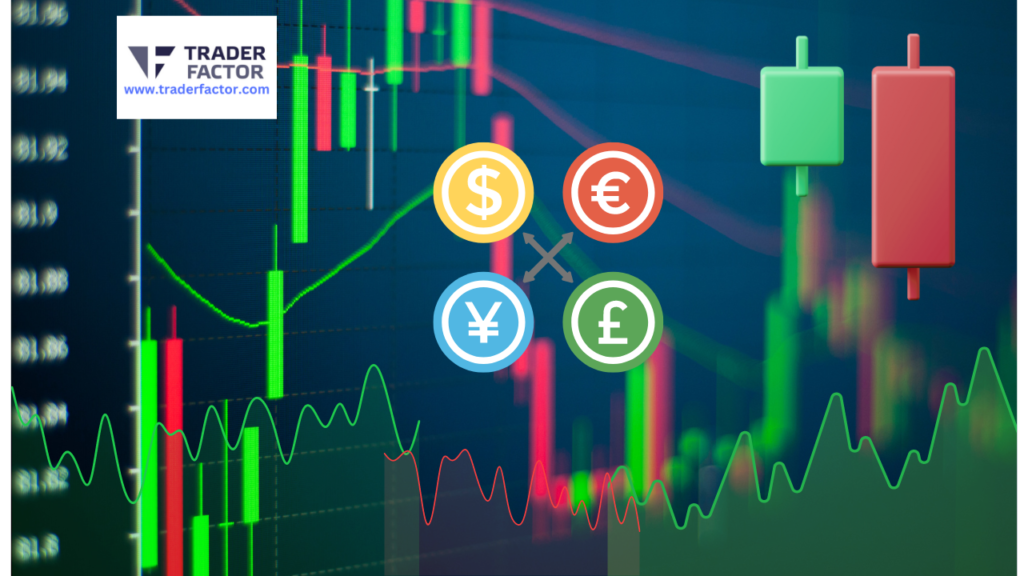
As in other markets, forex trading also experiences seasonal trends that can significantly impact your trading strategy. For instance, you’ll often observe a summer slowdown. As institutional traders take their holidays, the market experiences decreased activity and often lower returns. It’s essential to adjust your strategy to account for this period of relative inactivity.
Contrarily, autumn brings a surge of volatility. As traders return from their summer breaks, the increased activity can lead to significant market moves. This autumn volatility can offer many opportunities if you’re prepared to navigate the potentially tumultuous markets.
Christmas trading can be unpredictable during the festive season. It’s common to see a slowdown in market activity as people enjoy their holidays. However, don’t be complacent, as sudden market moves can still occur during this period.
Spring often presents fresh opportunities as the market activity picks up after the New Year. This period, combined with market overlaps when different global markets are open simultaneously, can lead to increased volatility and potentially lucrative trading opportunities. Therefore, understanding these seasonal trends is crucial in optimizing your forex trading strategy.

Avoiding Risky Trading Times and Events
While seasonal trends can significantly influence your trading strategy, avoiding certain risky times and events in forex trading is equally important. One of your key tools in avoiding these risky times is risk management. By analyzing the market and monitoring economic indicators, you can predict periods of volatility and avoid them.
Understanding trading psychology is also crucial. Fear and greed can drive the market in unpredictable directions during significant political unrest or natural disasters. It’s essential to stay level-headed and not let these events sway your trading strategy.
Another vital tool in your arsenal is technical analysis. This involves examining past market data to forecast future price trends. It can signal potentially risky times to trade, such as immediately before and after significant economic news events. These times often see dramatic price swings, making it a high-risk period for trading.
Forex Market Hours and Sessions
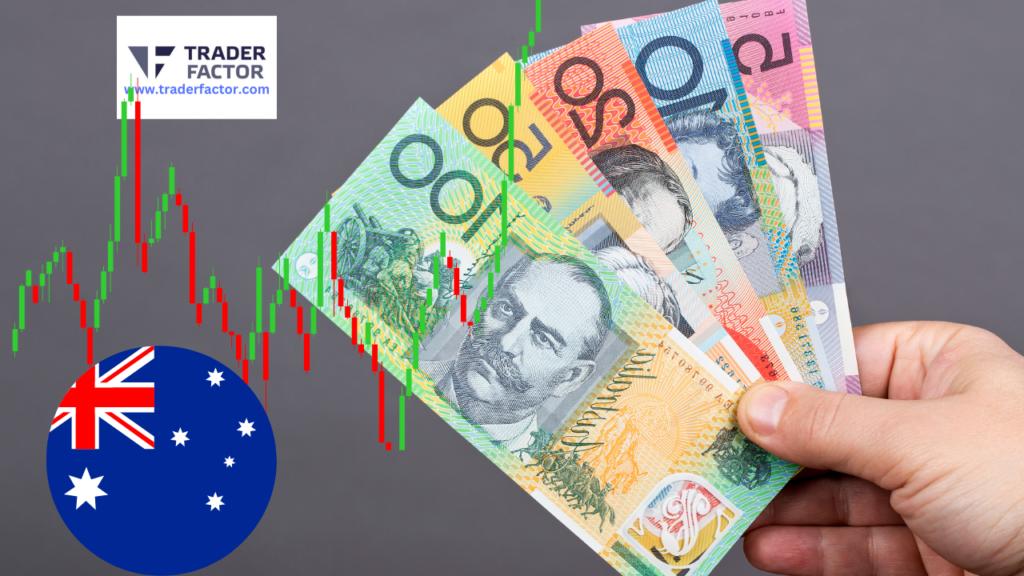
Understanding forex market hours and sessions is crucial because it allows you to capitalize on peak trading times across different regions. The forex market operates 24 hours a day, five days a week, across major financial centres across different time zones. This means that you can trade forex anytime, anywhere. However, not all trading hours have the same level of activity.
Peak hours are periods of high trading volume and market liquidity, usually occurring when the trading times of different financial markets overlap. One such example is the New York and London session overlap, which sees a high trading volume. Trading during these peak hours gives you the advantage of benefiting from more significant price movements and, thus, potentially higher profits.
Session overlaps like the London-New York overlap (from 1 pm to 4 pm GMT) or the Sydney-Tokyo overlap (from 2 am to 4 am GMT) are especially important as they represent the most active forex market hours. These overlaps result in higher currency pair volatility, creating more opportunities for you to trade. So, by understanding these time zones and session overlaps, you can strategically plan your trading schedule and maximize your chances of success.
Seasonal trends in forex trading can offer insightful patterns for traders looking to capitalize on predictable movements in currency pairs. These trends are influenced by various factors including economic cycles, fiscal policy changes, and holiday periods. Understanding these patterns can help traders make more informed decisions. Here’s an illustrative example of how a trader might use seasonal trends to their advantage:
Example: Trading the AUD/USD Pair Based on Seasonal Trends
Context:
The Australian dollar (AUD) and the U.S. dollar (USD) pair, known as AUD/USD, often exhibits specific seasonal trends. For instance, the AUD tends to strengthen against the USD during the months of December and January. This pattern can be attributed to several factors:
- Commodity Prices: Australia is a major exporter of commodities like iron ore and coal. The demand for these commodities often increases towards the end of the year, boosting the Australian economy and, by extension, the AUD.
- Holiday Season: The holiday season in December leads to increased consumer spending and economic activity in both countries. However, the impact on the AUD is more pronounced due to Australia’s significant export economy.
- Interest Rate Differentials: If the Reserve Bank of Australia has a higher interest rate compared to the U.S. Federal Reserve, it could attract more investors to AUD-denominated assets towards the year-end, seeking higher returns.
Trading Strategy:
Given this knowledge, a forex trader might adopt the following strategy:
- Preparation: Starting in late November, the trader begins to closely monitor the AUD/USD pair, looking for signs of strength in the AUD or weakness in the USD that aligns with historical seasonal trends.
- Entry: In early December, if other market conditions confirm the expected trend (e.g., rising commodity prices, positive economic data from Australia), the trader might enter a long position on AUD/USD, betting that the AUD will appreciate against the USD.
- Risk Management: To manage risk, the trader sets a stop-loss order at a point below their entry price to minimize potential losses if the market moves against the anticipated trend.
- Exit Strategy: The trader plans to hold the position through December and into January, closely monitoring market conditions and ready to exit either at a predetermined profit target or if the market sentiment shifts unfavorably.
- Review: After closing the position, the trader reviews the trade’s performance, considering whether the seasonal trend played out as expected and what factors influenced the outcome. This review helps refine future trading strategies.
This example illustrates how understanding and leveraging seasonal trends in the forex market, such as those observed in the AUD/USD pair, can provide traders with a framework for making strategic trading decisions. While not every seasonal pattern will repeat exactly each year, recognizing these trends can offer traders an edge in predicting market movements. However, it’s crucial to combine this approach with comprehensive market analysis and sound risk management practices to navigate the complexities of forex trading effectively.

Understanding Forex Market Structure
To trade forex effectively, you need to grasp the structure of the forex market. Understanding the forex market structure is not just about knowing the best days or hours to trade. It’s about understanding the forex market dynamics, from its players to its trends, and knowing how to use this knowledge to your advantage.
To deepen your understanding of the forex market structure and how to leverage this knowledge for effective trading, let’s explore each component with examples:
Forex Market Dynamics
The forex market is influenced by a variety of factors, including economic indicators, political events, and market sentiment. For instance, if a country’s central bank raises interest rates, its currency is likely to appreciate due to the influx of investments seeking higher returns. Traders who anticipate such moves can position themselves to profit from these shifts.
Major Players
Central banks play a crucial role in the forex market, as their policies directly impact national currency valuations. For example, when the European Central Bank announces quantitative easing measures, it typically results in a weaker Euro as the market anticipates increased liquidity. Financial institutions and individual traders must adapt their strategies in response to these central bank actions.
Market Trends
Identifying whether the market is in a bullish (upward), bearish (downward), or sideways trend is vital. For example, during a bullish trend for the USD/JPY pair, traders might look for opportunities to buy USD/JPY, expecting the trend to continue. Recognizing these trends early can be the key to successful trading.
Currency Pairs
Each currency pair behaves differently, influenced by the economies of the respective countries. For instance, AUD/USD may be particularly sensitive to changes in commodity prices because Australia is a significant exporter of commodities. Traders should understand these relationships to predict currency pair movements better.
Market Analysis Techniques
Technical analysis involves using historical price data to predict future movements. For example, the use of moving averages can help identify the direction of the trend, while support and resistance levels can indicate potential turning points in the market.
Economic Indicators
Economic reports such as GDP growth, unemployment rates, and consumer price index (CPI) can provide insights into a country’s economic health and potential currency movements. For example, a higher than expected CPI in the UK might lead to GBP appreciation as traders anticipate inflationary pressures might prompt the Bank of England to raise interest rates.
Chart Patterns
Patterns like head and shoulders, double tops and bottoms, and triangles can signal future price movements. For instance, a head and shoulders pattern might indicate a reversal from a bullish to a bearish trend, guiding traders to adjust their positions accordingly.
Risk Management Strategies
Effective risk management is crucial to protect against market volatility. For example, a trader might use a stop-loss order to limit potential losses on a EUR/USD position if the market moves against their prediction. Similarly, a take-profit order can be used to lock in profits before the market potentially reverses.
Margin Trading Fundamentals
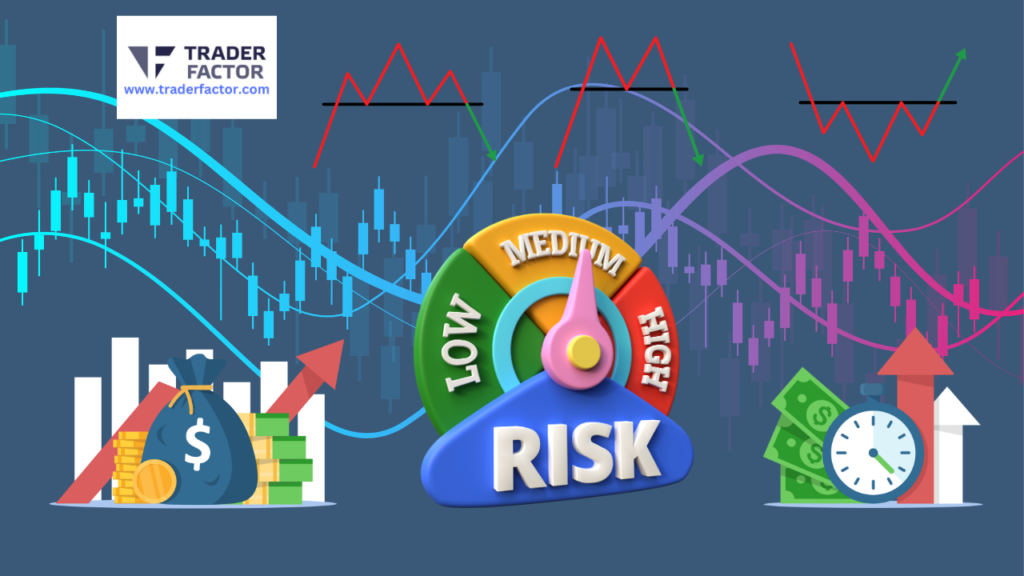
After mastering the dynamics and structure of the forex market, let’s examine the fundamentals of margin trading. This approach allows you to trade larger amounts by leveraging your initial deposit. However, it’s crucial to understand the leverage risks involved.
Margin management is a key skill in forex trading. You need to maintain enough funds in your account to avoid a margin call, which happens when your broker asks you to deposit more money to cover potential losses.
Risk assessment is closely related to margin management. It involves understanding market volatility and making decisions based on careful analysis.
Trading psychology also plays a significant role. It’s about maintaining control and not letting fear or greed dictate your actions.

Here’s a quick table to illustrate these points:
| Keyword | Description |
| Leverage Risks | Possibility of losing more than your initial investment |
| Margin Management | Ensuring sufficient funds in your account to cover potential losses |
| Risk Assessment | Analyzing market volatility and making informed trading decisions |
Time Management and Trading Discipline

In the world of forex trading, mastering your time and maintaining discipline can make all the difference between success and failure. It’s not just about when the market is open but also about managing your time effectively and maintaining the discipline to follow your trading strategies.
Consider these elements: – Sleep management: A clear mind cultivates better decision-making. Don’t skip on sleep. It’ll help you stay alert and focused during trading hours. – Psychological resilience: Trading can be stressful. Build your resilience to cope with the highs and lows. It’s not about avoiding loss but managing your reactions to it. – Risk assessment and market analysis: Keep your finger on the market’s pulse. Develop your skills in risk assessment, stay informed with market analysis, and adjust your strategies accordingly.

Best Days of the Week for Forex Trading
Best Days to Trade Forex
When you’re planning your forex trading schedule, keep in mind that Tuesday through Thursday are considered the most lucrative days to trade due to higher market volatility. These days show the most market activity, with volatility trends peaking, providing ample opportunities to profit from currency pair movements.
However, not all days are equal in forex trading. Weekly patterns reveal that market activity typically dips on Mondays and Fridays. Therefore, incorporating this understanding into your trading strategies can maximize your chances of success.
Here’s a quick summary:
| Day | Market Activity |
| Monday | Low |
| Tuesday | High |
| Wednesday | High |
| Thursday | High |
| Friday | Low |
Despite these general patterns, it’s vital to remain flexible and responsive to any sudden changes in the market. Unexpected news events can significantly impact volatility, even on quieter trading days. So, always keep an eye on market news and trends. Remember, successful forex trading isn’t just about when you trade and how effectively you respond to market conditions.
Frequently Asked Questions
Who Are the Best Forex Brokers?

Here are some trusted multiregulated forex brokers suitable for all styles of trading :
OneRoyal: Known for its social trading platform, OneRoyal offers many educational resources and a convenient demo account for practice.
IronFx: This broker provides a simple platform and a risk management tool, helping you better control your trading risks.
Admirals: Admirals stands out with exceptional customer support and a wide range of educational resources.
ActivTrades: Offers a user-friendly platform, extensive educational resources, and versatile demo accounts.
EightCap: EightCap wraps it up with an intuitive platform, top-notch educational materials, and an effective customer support team.

What are some effective strategies for trading Forex on the best days and times?
You can leverage volatility by trading midweek, use market analysis techniques to predict trends, employ risk management approaches to limit losses, utilize algorithmic trading strategies for efficiency, and select currency pairs wisely.
How Do Seasonal Trends in Forex Trading Correlate With Specific Currency Pairs?
Seasonal trends in forex trading can impact specific currency pairs. You’ll notice cyclical patterns and currency pair seasonality. Use seasonal forex strategies that consider weather influences forex and global seasonal fluctuations for effective trading.
Besides Major Holidays and Global News Events, What Other Factors Can Contribute to Risky Trading Times in Forex?
Besides holidays and global news, currency volatility, market liquidity, economic indicators, trader psychology, and interest rate changes can make forex trading riskier. You need to consider these factors for successful trading decisions.
How Does the Structure of the Forex Market Influence the Profitability of Trades During Different Market Sessions?
Market structure impacts trade profitability. Higher market liquidity during overlapping sessions leads to currency volatility. Cross-border trades, trading platforms, and Forex indicators also influence market dynamics. Understand these to optimize your trades.

What Are Some Practical Tips for Maintaining Discipline and Effective Time Management in Forex Trading?
To maintain discipline in forex trading, you’ve got to master your trading psychology. Develop a solid trading plan, adhere to risk management principles, establish routine trading schedules, and use sound decision-making techniques.
Conclusion
So, you’ve got the inside scoop on the best days to trade forex. Remember, Tuesdays to Thursdays are your golden days, and January to May are promising months. But avoid the riskier times and stay disciplined. Understand market structures, margins, and forex sessions. It’s not just about when you trade but also how you manage your time and strategy. With this knowledge, you’re well on your way to navigating the forex market like a pro. Happy trading!
Disclaimer:
All information has been prepared by TraderFactor or partners. The information does not contain a record of TraderFactor or partner’s prices or an offer of or solicitation for a transaction in any financial instrument. No representation or warranty is given as to the accuracy or completeness of this information. Any material provided does not regard the specific investment objective and financial situation of any person who may read it. Past performance is not a reliable indicator of future performance.











